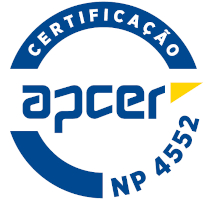MONTADO & CLIMATE; A NEED TO ADAPT
- Associação para a Defesa do Património de Mértola(líder)
- Universidade de Évora(parceiro)
Objetivos, atividades e resultados esperados/atingidos
Objetivos
This project aims to contribute to the EU climate policy priority of “Climate Change Adaption” and to a lesser extent to “Climate Change Mitigation”. The overall objective is to demonstrate innovative adaption technologies and ecosystem services and to ensure their replication among communities in Portugal and Spain depending on their respective Montado and Dehesa (from here on: “M/D”) landscapes, to help curb abandonment, socioeconomic decline and environmental degradation. This project takes an ecosystem approach by focusing on the landscape qualities as a unique example worldwide of a sustainable and multi-functional agroforestry system. This project introduces innovative technical and methodological instruments to help prepare the M/D ecosystem and its dependent communities for climate change and for restoration of its multi-functional character and contributions to socioeconomic development, environmental services, biodiversity conservation and carbon sequestration. The project objective is aligned with the EU Adaption Strategy objective of improving the knowledge base for better informed decision making on adaptation. This entails methods and tools to ensure that lessons learned from the land use demonstrations become available for replication purposes during the project. In addition to Climate Change Adaption, the project will also contribute to “Climate Change Mitigation”, through recovery of the project land areas under threat of desertification and forest fires – thus preventing soil loss and related extra GHG emissions – and through overall biomass increase for improved carbon sequestration.
In summary, this project has two objectives:
1. Introducing innovative adaption technologies in Portuguese and Spanish M/D landscapes and communities, through demonstration of sustainable and profitable Integrated Land Use (ILU) systems that help restore the landscape’s multi-functional character and its contributions to socioeconomic development, environmental services, biodiversity conservation and carbon sequestration.
2. Maximizing the transformational impact of these adaptation technologies and ecosystem services and securing their replication and upscaling, through a farmer-to-farmer ILU adoption plan, developed commercialization channels, sustainability and carbon certification and a marketing plan for regional produce.
Atividades
In Action A1, much and varied context information is gathered, to provide structure and guidelines for design of the ILU systems (Objective 1) and replication strategy (objective 2). Action A2 involves an indepth analysis of relevant stakeholders to ensure the project is well embedded in the local context. Implementation (C) actions are grouped in accordance with both project objectives:
Objective 1 groups 5 main actions, with C1 setting the baseline for important parameters for project success, enabling monitoring and comparisons. In C2, all the previously gathered information is combined into a contextualized ILU design for each project site. Required preparations for implementation are included in C3, with regards to soil, plants and seeds, mycorrhizae and facilities for ecosystem services. Tailor-made training is provided under C4 for responsible project partners and others involved in implementation. Action C5 [R1] deals with actual establishment of the ILU systems on the project’s demonstration site of 200 hectares.
Objective 2 groups all actions to facilitate ILU development replication and transfer. In C6, replication and transfer is enabled with 11 first landowners applying the learned ILU techniques on their own sites, with another 1050 ha. C7 is about establishing a fully functional commercial company with established sales channels and funding access, to guarantee continued economic sustainability of activities. In C8 the second replication phase is carried out, involving 110 additional farmers adopting ILU techniques on their land. Preparations and implementation of FSC and Carbon certification are included in C9. In C10 a branding plan is developed by a specialized company and specific marketing events are carried out for ILU based products.
Actions D, E, F apply to both objectives. D1 involves project impact and output monitoring to ensure project contribution to climate change adaptation and mitigation in accordance with Key LIFE indicators. D2 is about monitoring the socioeconomic impact of the project. In E1, specific dissemination activities are carried out e.g. sending out Facebook posts, messages, newsletters, vídeos and organizing events. E2 includes policy advice and drafting of a Montado/Dehesa Action plan. E3 includes a project website, notice boards and a layman's report. Action E4 is about maximizing synergies through interactions with other projects. Finally, the F actions deal with project management and administrative tasks.
Resultados
The 1st main result consists of established adaptation technologies on 1250 hectares of M/D land with a mix of intervention types tailored to specific local conditions assessed in activity A1. Results include:
• An established Integrated Land Use system on 1250 hectares of M/D land, with combined methods e.g. inter-planting, diseased tree removal, reforestation, forage crop establishment, livestock fencing and other (Action C2).
• Safeguarding and Improvement of Biodiversity functions, including a 10% improved presence of indicator species for birds and butterflies and a restored plant diversity and structural complexity matching habitat requirements for the Iberian Lynx.
• Improved socioeconomic benefits of M/D land, including at least 8 viable income sources for domestic and international markets (C2), a 150 Euro per hectare (or 300%) farmer income increase, an employment increase of 1 FTE per 10 hectares and an overall IRR increase to at least 6%.
• Climate Change Mitigation results include a carbon sequestration increase of 1 ton CO2-e per hectare subjected to carbon saving activities.
The 2nd main result is a fully functional replication and upscaling system to ensure maximum adoption of adaptation technologies. Results include:
• Established self-supporting commercial company responsible for collective purchase, sales, marketing and farmer-to-farmer promotion (Full list in C7).
• 11 project partners trained as promoters, each successfully transferred their knowledge to 11 other farmers (110 farmers and estimated 10.000 hectares in total) up until adequate ILU designs for their land;
• The company signed at least 10 cooperation agreements with commercial partners for products and eco-services and promote their products at 2 trade fairs;
• Fully prepared Group Manager (also company Sales Manager) leading Group Certification process in cooperation with promoters.
• Created synergies with national governments, forest authorities (ICNF partner), agricultural and environmental authorities, WWF, other public and private entities for achieving policies and legislation beneficial to M/D development.
• Created networks for dissemination, including> 10 exchange events with policy makers; 10 meetings with similar projects; a project website with access to social media, other information like contact & research database, FAQ; 50 articles for science & media and numerous dissemination materials (e.g. leaflet, brochure, copies of Laymen’s Report); 5 excursions to project sites; etc.





















